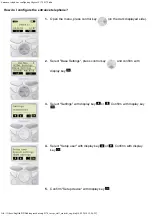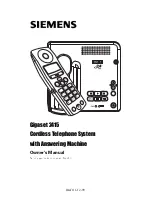
V O I P I N F O R M A T I O N
233
•
Proxy server name
•
Registrar server name
•
Outbound proxy
•
Realm/domain
SETTING CODEC OPTIONS
If you are using a TalkSwitch-certified VoIP service provider, visit the support section at
http://
global.talkswitch.com
to access the service configuration guide for your VoIP service provider.
The service configuration guide lists the supported codecs.
A codec is a method of compressing and decompressing audio signals for communication across
a network. TalkSwitch supports the G.729, G.726 and G.711 (µ-law or A-law) codecs for VoIP
calls. If your service provider or equipment requires specific codecs for VoIP or Fax over IP calls,
you can restrict TalkSwitch to use the required codec.
The
Codec Options
window allows you to select the codecs your system can use, specify the
preferred codec, and clear the unsupported codecs. You can specify the codecs for the
TalkSwitch profile, and for each service provider profile. External IP extensions will use the
preferred codec specified in the TalkSwitch profile.
1. Select the
VoIP Configuration
page.
2. Click
Codec Options
. The
Codec Options
window appears.
3. Select the codecs your system can use, and clear the unsupported codecs. The following
codecs are supported:
•
G.729
— This codec provides good quality. It requires the least bandwidth and
accommodates the highest number of concurrent calls.
•
G.726
— This codec provides better quality. It requires more bandwidth and
accommodates fewer concurrent calls.
•
G.711
µ and
G.711A
— This codec provides high quality and supports Fax over IP. It
requires the most bandwidth and accommodates the fewest number of concurrent calls.
G.711µ is used in North America and Japan. G.711A is used elsewhere.
4. Select the
Preferred codec
.
G.729
is the default codec.
5. Set
Voice activity detection (VAD)
. Enabling VAD reduces voice bandwidth when no speech is
detected, and reduces transmission of background noise. We recommend disabling VAD to
keep bandwidth available for speech.
















































